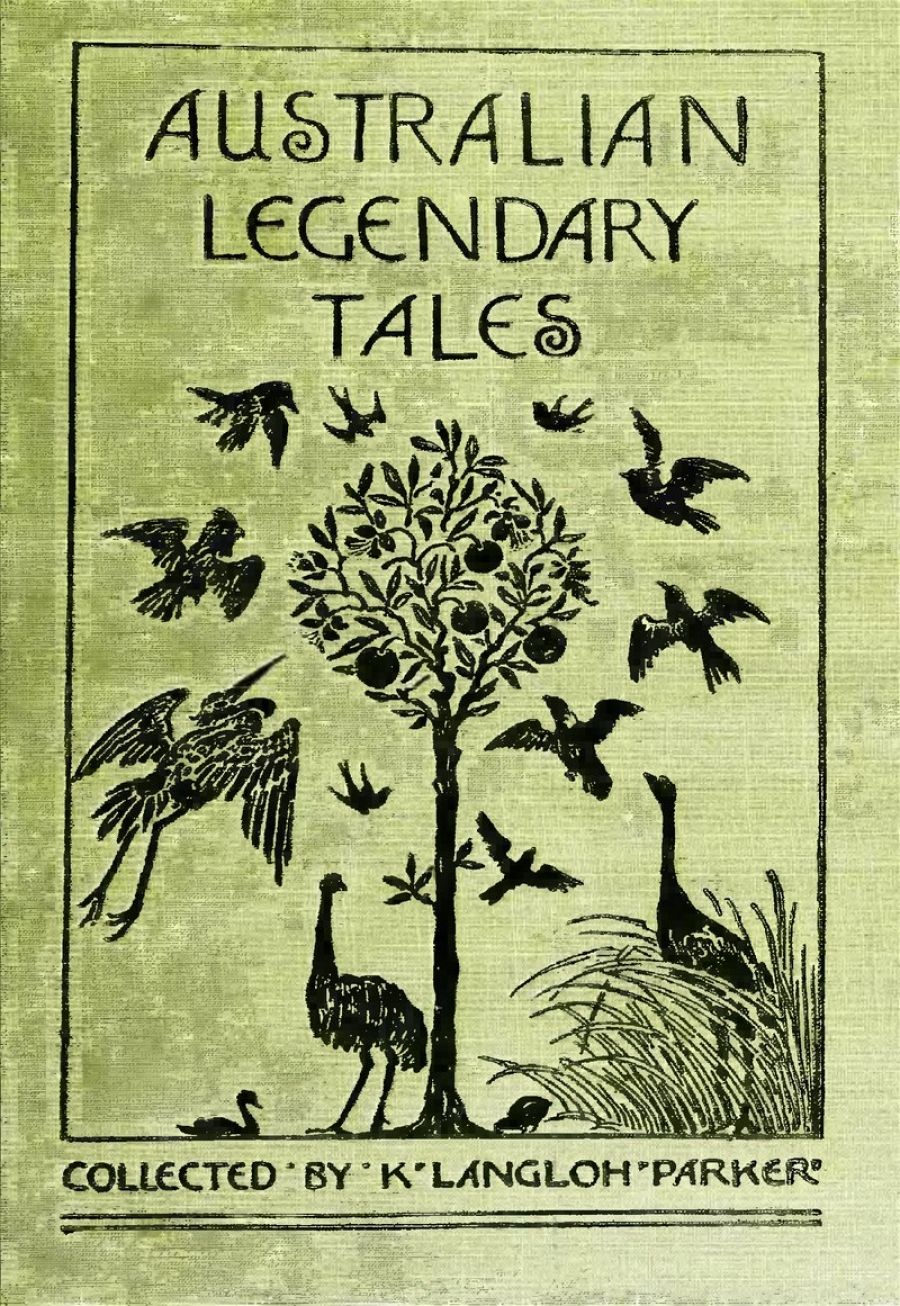
- Free Article: No
- Review Article: Yes
- Article Title: Structures of myth
- Article Subtitle: An essential display of Indigenous storytelling
- Online Only: No
- Custom Highlight Text:
The handsome reissue in one volume, by Collins, of Australian Legendary Tales with illustrations by Rex Backhaus-Smith, is a most welcome addition to current publications for Australian enthusiasts and certainly well overdue.
- Book 1 Title: Australian Legendary Tales
- Book 1 Biblio: The Bodley Head, $12.95 pb
We equate, quite erroneously, the terms ‘myth’ with ‘lie’ and, for this gross error, can thank the eighteenth-century Deists, who thundered ‘Myth is the mischievous invention of corrupt minds’, and our own arrogant stupidity in accepting their statement as accurate.
Furthermore we fail to define the subtle and important functional difference between myth, fable and legend. Fables are, essentially, exemplary, told to define socially sanctioned codes of conduct in a given social order.
Legends are founded upon some historical personage or event but, with the passing of time and retelling, often become embellished beyond recognition.
Myth falls into a much more highly abstract category for, as Levi-Strauss pointed out, ‘myth lies halfway between percept and concept.’ So, for example in English myth we have sophisticated heroes like Lancelot and behind him Gawain and behind Gawain, Cuchulain. But all of them owe their existence to some (forgotten) Solar deity. Om capacity to perceive is expressed, through myth, in the elements comprising our particular environment.
For the Aboriginal people The Dreaming was their Cosmic mythos and, for them, Time began when The Dreaming was completely conceptualised in social order and cultural ceremony. It is somewhat sad, therefore, to find Wandjuk Marika, in his introduction to this edition of Australian Legendary Tales, using the inaccurate European word ‘Dream time’ and, of course, Langloh Parker’s use of the term ‘legends’ is equally inaccurate because this collection of Aboriginal narratives contains myths, legends and fables. It is a most important record, from one tribe, of the general ethos informing these dignified and highly perceptive people.
Myths provide a restatement of the concept originally formulated and, by reiteration and re-creation, through aural and visual processes, reinforce or reinvigorate the primary concept of the act of Being for those possessing the myth as part of their culture. All readers interested in the myths of the Aboriginal people will welcome this publication as an authentic rather than an expurgated record. A few years ago a heavily ‘edited’ version of these Tales appeared: one hopes that it and any of its progeny will now lie quietly forgotten. Langloh Parker might not have been the world’s greatest scholar but she was a reliable repetiteur: we should be grateful.


Comments powered by CComment